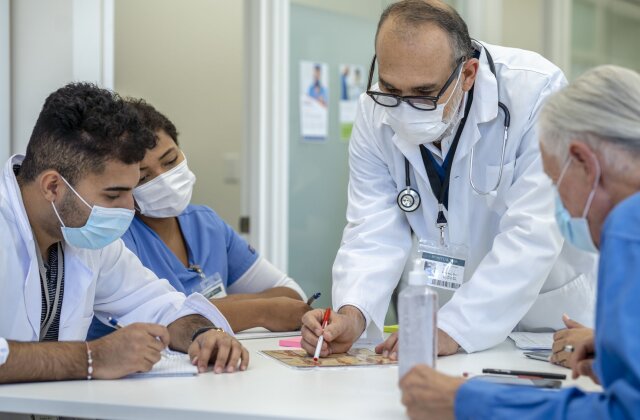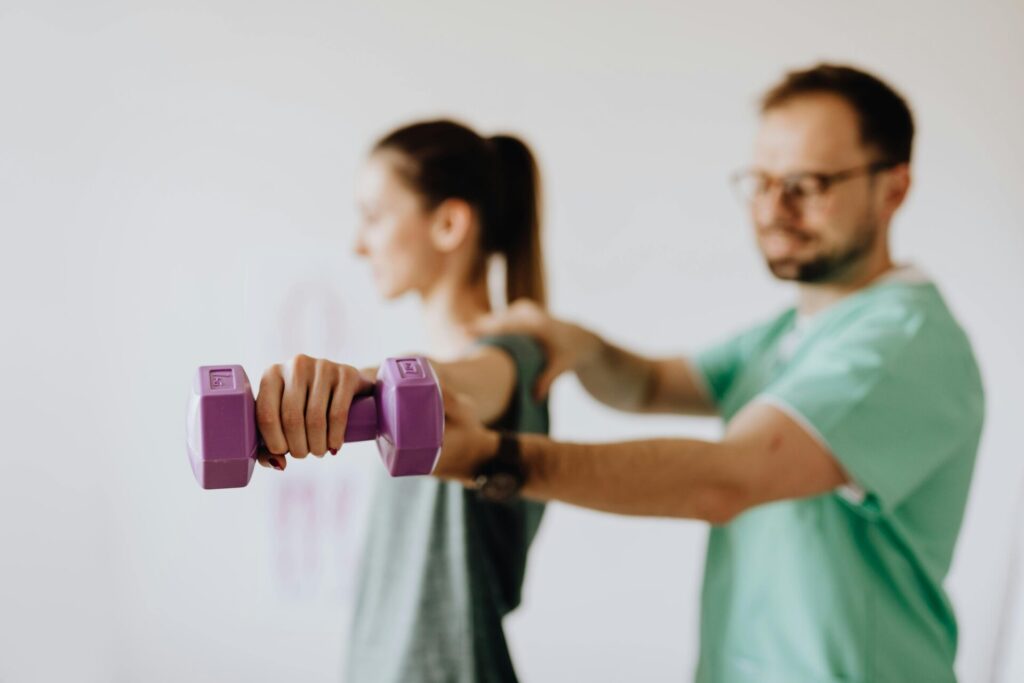Last updated on May 12th, 2025 at 06:42 am
Table of Contents
Introduction

Embarking on the journey to become a Doctor of Osteopathic Medicine (DO) is an adventure that begins with the AACOMAS application (which stands for the American Association of Colleges of Osteopathic Medicine Application Service) . This centralized application service is your golden ticket to applying to the variety of osteopathic medical schools across the United States. With AACOMAS, you can streamline the process by submitting a single application to multiple schools, saving you time and effort.
But let’s not sugarcoat it – the application process can be daunting. It’s not just about filling out forms; it’s about presenting your best self to the admissions committees. This guide is here to demystify the process, offering you step-by-step assistance to navigate through the various sections of the AACOMAS application. From registering your account to hitting the submit button, we’ve got you covered.
As you prepare to showcase your academic achievements, extracurricular activities, and passion for osteopathic medicine, remember that this is more than just an application. It’s the first step in your journey to becoming a healthcare professional who views patients holistically and is committed to promoting wellness. So, let’s dive in and explore how to make your AACOMAS application shine!
Understanding AACOMAS
Definition and purpose of AACOMAS
By centralizing the application process, AACOMAS helps ensure that applicants are evaluated fairly and consistently across all participating schools. This uniformity is crucial in maintaining the high standards expected of osteopathic medical students and future practitioners. Moreover, AACOMAS offers resources and guidance to help applicants navigate the application process, from understanding prerequisites to submitting transcripts and letters of recommendation.
The role of AACOMAS in the application process for osteopathic medical schools
AACOMAS acts as a conduit between applicants and osteopathic medical schools, ensuring that schools receive a comprehensive and standardized set of application materials. This standardization is vital for admissions committees to assess applicants’ suitability for their programs effectively.
The AACOMAS application includes several key sections: Personal Information, Academic History, Supporting Information, and Program Materials. Each section is designed to gather detailed information about the applicant’s background, academic achievements, and experiences relevant to a career in osteopathic medicine. For example, the Academic History section requires applicants to enter all college coursework, providing a clear picture of their academic preparation for medical school.
One of the unique aspects of AACOMAS is its emphasis on holistic review. Osteopathic medical schools are known for their whole-person approach to medicine, and this philosophy extends to their admissions process. AACOMAS encourages applicants to highlight not only their academic credentials but also their experiences, achievements, and personal qualities that align with the osteopathic profession’s values. This holistic approach ensures that admissions committees can identify candidates who are well-rounded and possess the potential to excel as osteopathic physicians.
AACOMAS also plays a role in promoting osteopathic medicine as a career choice. Look through the website for why choose osteopathic medicine as opposed to allopathic medicine, which is something you may need to reflect on in your interviews.
Starting Your AACOMAS Journey: Registration and Basic Information
How to register for an AACOMAS account
The registration process for AACOMAS is straightforward and user-friendly. To get started, visit the AACOMAS website and look for the “Create an Account” button. This will lead you to a registration form where you’ll be asked to provide basic information such as your name, contact details, and a secure password. It’s important to use an email address that you check regularly, as this will be the primary means of communication throughout your application process.
Once you’ve completed the registration form, you’ll receive a confirmation email from AACOMAS.
Key sections of the AACOMAS application: Personal Information, Academic History, Supporting Information, and Program Materials
After registering, you’ll gain access to the AACOMAS application, which is divided into four main sections:
1. Personal Information: This section is where you’ll enter your biographical details, including your name, date of birth, and contact information. You’ll also provide information about your citizenship, race/ethnicity, and any family members who are physicians. This section is an opportunity to introduce yourself to the admissions committees and provide a snapshot of your background.
2. Academic History: In this section, you’ll detail your educational journey, listing the high schools and colleges you’ve attended. The most time-consuming part of this section is transcript entry, where you’ll need to input all your college coursework. Accuracy is crucial here, as any discrepancies could delay your application. If you find this task daunting, AACOMAS offers a Professional Transcript Entry Service for a fee, which can save you time and ensure accuracy.
3. Supporting Information: This section allows you to showcase your experiences, achievements, and letters of recommendation. You’ll categorize your experiences into different types, such as extracurricular activities, healthcare experience, and volunteer work. Each entry provides a chance to demonstrate your commitment to medicine and your community.
4. Program Materials: In the final section, you’ll select the osteopathic medical schools to which you wish to apply and review any additional requirements they may have. Some schools may ask for additional essays or information, so it’s important to pay close attention to each program’s specific requirements.
As you navigate through each section of the AACOMAS application,take your time, be thorough, and ensure that every piece of information you provide is accurate and reflective of your dedication to becoming an osteopathic physician.
Building a Strong Application: Academic History and Coursework
A cornerstone of your AACOMAS application is the Academic History and Coursework section. This part of the application provides a comprehensive overview of your educational background, which is critical for admissions committees to assess your academic readiness for the rigors of medical school.
Tips for accurately entering high school and college coursework
When it comes to entering your coursework in the AACOMAS application, precision is key. Start by gathering all your transcripts from high school and college to ensure you have a complete record of your courses and grades. As you enter your information, pay close attention to the details:
1. List all institutions: Include every high school and college you’ve attended, even if you transferred or only took a few classes at a particular institution.
2. Enter courses exactly as they appear on your transcripts: This includes the course title, grade, and credit hours. Avoid abbreviations or alterations to the course names.
3. Include all coursework: This means listing courses that you withdrew from, repeated, or for which you received a non-traditional grade (such as pass/fail).
4. Double-check your entries: Once you’ve entered all your courses, review your entries for accuracy. Any discrepancies between your AACOMAS application and your official transcripts can lead to delays in processing your application.
By following these tips, you can ensure that your academic history is presented clearly and accurately, which is essential for a smooth application process.
Importance of transcript entry and how to use the Professional Transcript Entry Service
The transcript entry section of your AACOMAS application is crucial because it provides a detailed record of your academic performance. This information is used by admissions committees to calculate your GPA and assess your academic strengths and areas for improvement. Given its significance, it’s essential to enter your transcript information correctly.
For applicants who find the task of entering coursework daunting or time-consuming, AACOMAS offers the Professional Transcript Entry (PTE) Service. This service allows you to delegate the task of entering your coursework to a team of professionals who will ensure that your transcripts are entered accurately and efficiently. Here’s how to use the PTE Service:
1. Opt for the service early: Decide to use the PTE Service when you begin your AACOMAS application, as it can take some time for the service to complete the transcript entry.
2. Submit your transcripts: Send official transcripts from all your attended institutions to the PTE Service.
3. Review the entries: Once the PTE Service has entered your coursework, you’ll need to review the entries for accuracy before they are added to your AACOMAS application.
Using the PTE Service can save you time and reduce the stress of ensuring that your coursework is entered correctly. However, it’s important to remember that the final responsibility for the accuracy of your application lies with you, so a thorough review of the entries is essential.
Showcasing Your Best Self: Personal Information and Supporting Information
In the AACOMAS application, the Personal Information and Supporting Information sections are your opportunities to present a well-rounded picture of yourself beyond your academic achievements. These sections allow you to share your background, experiences, and the qualities that make you a unique and compelling candidate for osteopathic medical school.
Guidance on filling out biographical, contact, and other personal information
The Personal Information section is the first impression you’ll make on the admissions committees. It’s essential to fill out this section accurately and completely:
1. Biographical information: Include your full name, date of birth, and other identifying information. Ensure that your name matches the one on your official documents to avoid any confusion.
2. Contact information: Provide a current email address and phone number. These will be the primary means of communication between you and the medical schools, so make sure they are accurate and checked regularly.
3. Citizenship and demographic information: Indicate your citizenship status and provide information about your race, ethnicity, and any family members in the medical field. This information helps schools understand your background and any familial influences on your career choice.
How to effectively present your experiences, achievements, and letters of recommendation
The Supporting Information section is where you can truly shine. This is your chance to highlight the experiences and achievements that demonstrate your readiness for medical school and your commitment to the osteopathic profession:
1. Experiences: Categorize your experiences into relevant types, such as extracurricular activities, healthcare experience, and volunteer work. For each entry, provide a brief description that highlights your role, responsibilities, and any notable accomplishments. Be sure to include experiences that demonstrate your leadership, teamwork, and communication skills, as these are highly valued in the medical field.
2. Achievements: List any awards, honors, presentations, publications, or scholarships you’ve received. These accomplishments show your dedication to your academic and professional pursuits and can set you apart from other applicants.
3. Letters of recommendation: Choose recommenders who know you well and can speak to your strengths and potential as a future physician. Make sure to request your letters well in advance and provide your recommenders with any necessary information about the AACOMAS process. Once you’ve entered your recommenders’ information into AACOMAS, they’ll receive instructions on how to submit their letters electronically.
Click to see hundreds of consultants who can mentor you:
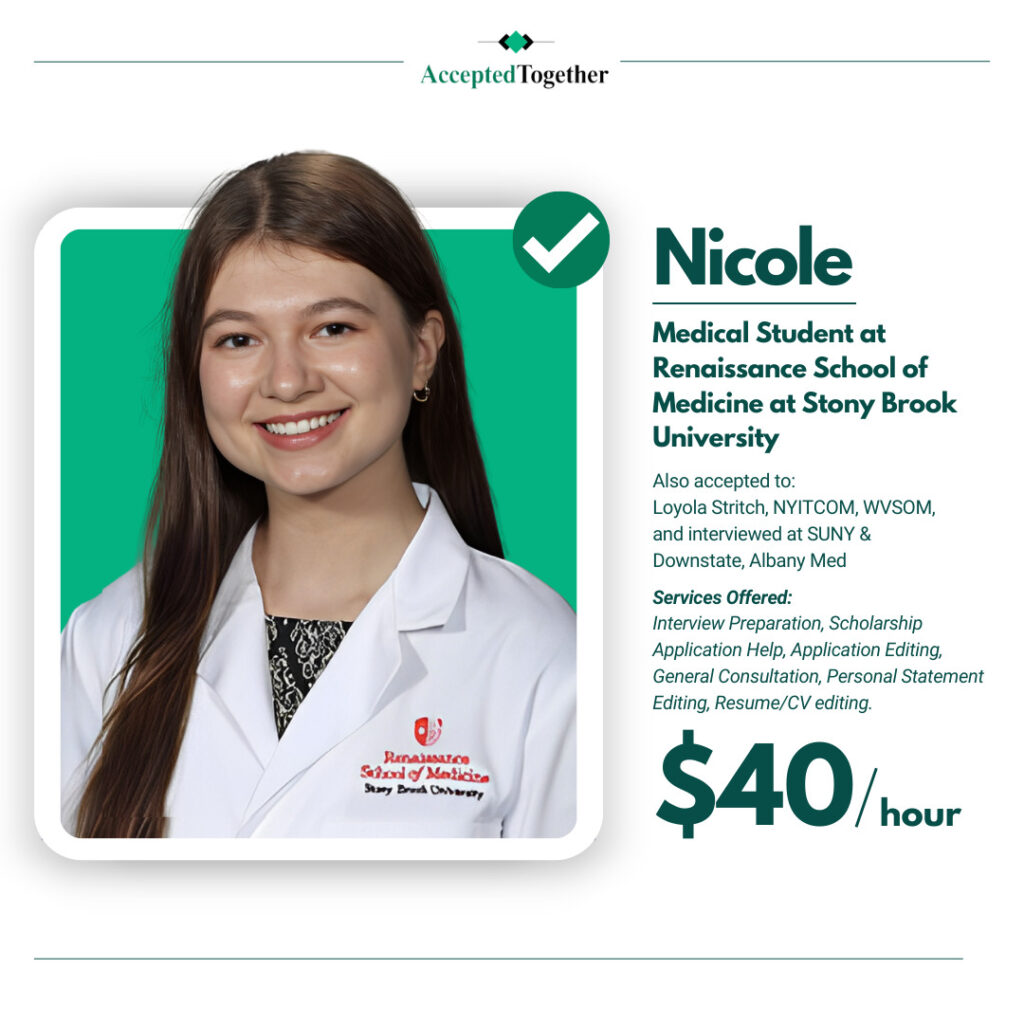
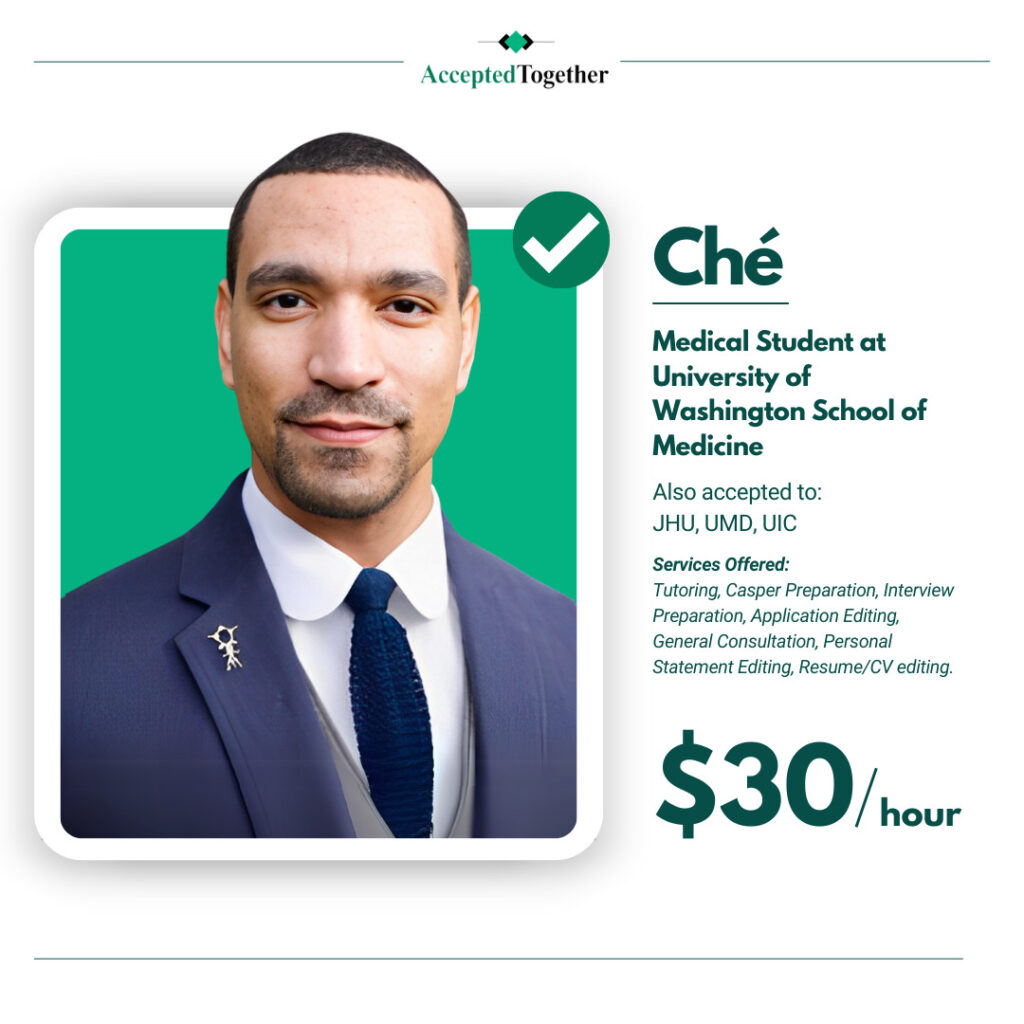
Choosing Your Path: Selecting Osteopathic Medical Schools and Program Materials
The AACOMAS application allows you to apply to multiple schools, but it’s crucial to choose the ones that align with your goals and values.
How to research and select DO schools that align with your goals
Your journey to becoming a Doctor of Osteopathic Medicine starts with selecting the right schools for you. Here’s how to approach this important decision:
1. Assess your priorities: Before you start researching schools, take some time to reflect on what’s important to you. Consider factors such as location, school size, curriculum focus, and opportunities for hands-on experience.
2. Use reliable resources: The AACOM website provides a wealth of information about osteopathic medical schools, including their mission statements, programs, and admission requirements. The Choose DO Explorer tool is particularly helpful for comparing schools and finding ones that match your criteria.
3. Look beyond academics: While academic excellence is important, also consider the school’s culture, student support services, and community involvement opportunities. Reach out to current students or alumni to get a sense of what it’s like to attend the school.
4. Consider your compatibility: Make sure the schools you select align with your interests in osteopathic medicine. If you’re passionate about primary care or rural medicine, for example, look for schools with strong programs in those areas.
By carefully researching and selecting DO schools that resonate with your goals, you’ll set yourself up for a fulfilling medical education journey.
Understanding the additional requirements for each selected school
Once you’ve narrowed down your list of schools, it’s essential to understand the specific requirements for each one. Here’s how to navigate this step:
1. Review the Program Materials section: In the AACOMAS application, the Program Materials section provides detailed information about each school’s additional requirements. This can include supplemental essays, letters of recommendation, and other materials.
2. Check for prerequisites: Each school may have different prerequisites for admission. Make sure you’ve completed the necessary coursework and have the required test scores for each school on your list.
3. Pay attention to deadlines: Keep track of application deadlines for each school, as they can vary. Missing a deadline could jeopardize your chance of admission, so stay organized and plan ahead.
4. Prepare for secondary applications: Some schools may require secondary applications, which often include additional essays and questions. Be prepared to respond promptly and thoughtfully to these requests.
By understanding the additional requirements for each osteopathic medical school you’re interested in, you can ensure that your application is complete and tailored to each institution’s expectations. This attention to detail can make a significant difference in the success of your application.
Click to see hundreds of consultants who can mentor you:
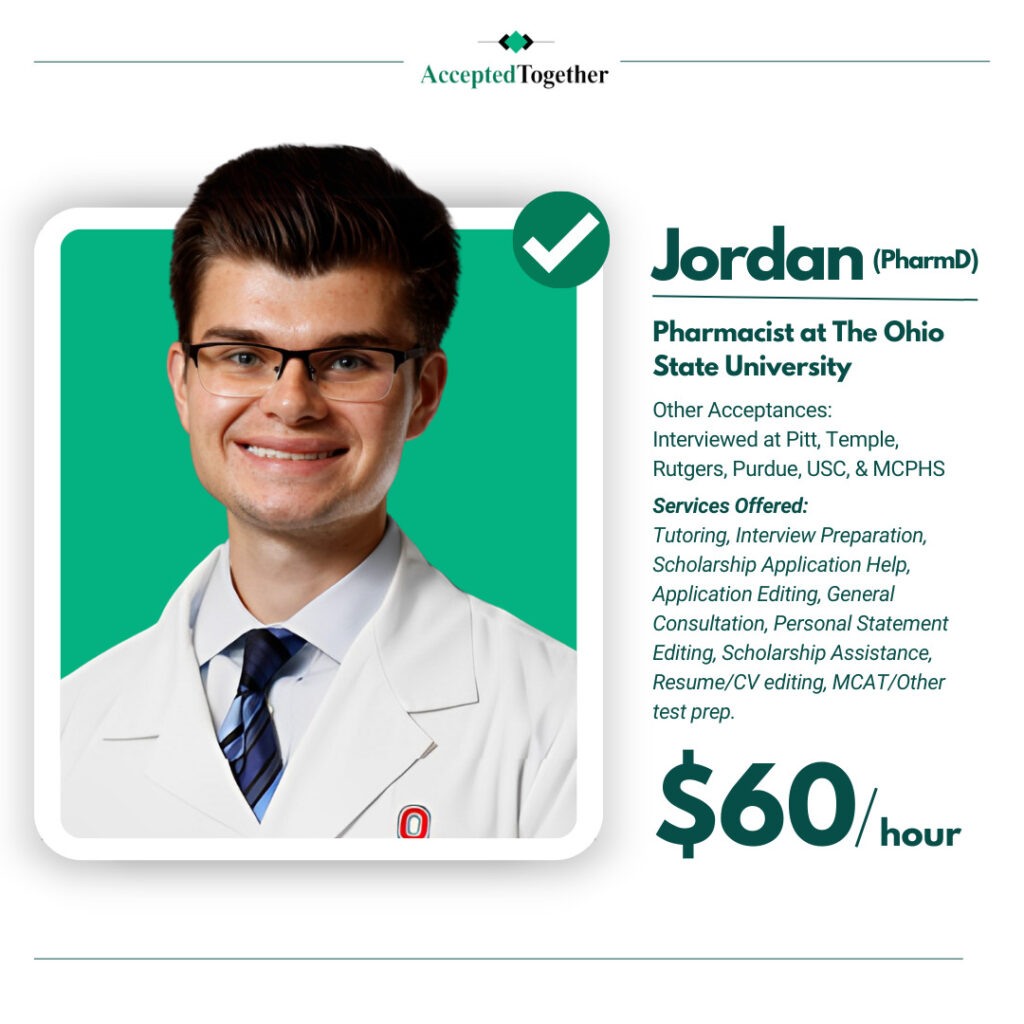

Final Steps: Reviewing, Submitting, and Monitoring Your Application
As you approach the finish line of your AACOMAS application process, it’s crucial to ensure that everything is in order before you hit the submit button. This final stage is your opportunity to make any necessary adjustments and to keep track of your application’s progress.
Importance of reviewing your application for accuracy
Before submitting your application, take the time to thoroughly review each section for accuracy and completeness. Here are some tips to ensure your application is error-free:
1. Double-check personal information: Verify that your name, contact details, and other personal information are correct and match your official documents.
2. Review academic history: Ensure that your coursework, grades, and transcripts are accurately entered and reflect your academic record.
3. Check experiences and achievements: Make sure that all your experiences, achievements, and letters of recommendation are included and properly described.
4. Proofread essays: Carefully review your personal statement and any additional essays for grammar, spelling, and clarity.
A meticulous review of your application can prevent delays in processing and ensure that admissions committees receive an accurate representation of your qualifications.
The submission process and how to monitor the status of your application
Once you’re confident that your application is complete and accurate, it’s time to submit it. Here’s what you need to know about the submission process and monitoring your application:
1. Submit your application: After reviewing your application, you can submit it through the AACOMAS portal. Make sure to submit it before the deadlines of your chosen schools.
2. Pay the application fee: You’ll need to pay the application fee for AACOMAS and any additional fees for the schools you’re applying to. Keep in mind that these fees are non-refundable.
3. Monitor your application status: After submission, you can track the status of your application through the AACOMAS portal. You’ll be able to see when your application is received, verified, and transmitted to your selected schools.
4. Stay informed: Keep an eye on your email and the AACOMAS portal for any updates or requests for additional information. Promptly responding to these requests is crucial for keeping your application on track.
Conclusion
Embarking on the journey to becoming a Doctor of Osteopathic Medicine is an exciting endeavor, and the AACOMAS application is your first step toward achieving this goal. By carefully navigating each section of the application, from personal information to academic history and supporting documents, you’re laying the foundation for a strong candidacy. Remember, the key to a successful application is attention to detail, accuracy, and a clear demonstration of your passion for osteopathic medicine.
Frequently
Asked Questions
The verification process for AACOMAS can take up to 10 business days. During this time, AACOMAS verifies all your coursework and converts your grades to its GPA system. It’s important to ensure all your information is accurate to avoid any delays in this process.
The average MCAT score for accepted DO applicants tends to be around 504. However, it’s important to note that osteopathic medical schools look beyond just your GPA and MCAT scores, utilizing a holistic review of candidates.
AACOMAS stands for the American Association of Colleges of Osteopathic Medicine Application Service. It is a centralized application service used by most osteopathic medical schools in the U.S. to streamline the application process for prospective students.
Yes, AACOMAS calculates your science GPA and total GPA based on the coursework information you enter in the application. These calculations are important for osteopathic medical schools to assess your academic readiness for medical school.
The AACOMAS application allows you to list an unlimited number of experiences. Each experience entry has a character limit of 600 characters, including spaces, for you to describe the experience in detail.




